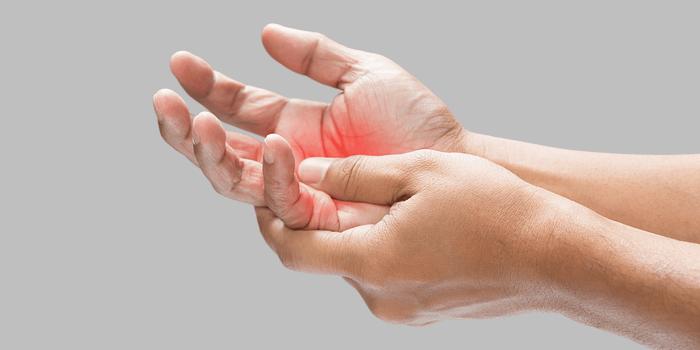Ultrasound-Guided Cortisone Injections for De Quervain’s Tenosynovitis
Introduction
De Quervain’s tenosynovitis is a condition that affects the tendons on the thumb side of the wrist, causing pain and discomfort, particularly with movements involving grasping or twisting. This condition occurs when the tendons become inflamed or irritated, leading to swelling and restricted movement. De Quervain’s tenosynovitis can affect individuals of all ages and is commonly seen in people who engage in repetitive hand or wrist motions, such as typing, lifting, or certain sports activities.
Alton Pain Clinic specialises in providing advanced pain management solutions, including ultrasound-guided cortisone injections, to help alleviate the symptoms associated with De Quervain’s tenosynovitis.

Anatomy of the Wrist and Thumb Tendons
The wrist is a complex structure composed of bones, ligaments, tendons, and muscles, all working together to facilitate movement. De Quervain’s tenosynovitis primarily affects two tendons:
- Abductor pollicis longus (APL) — responsible for moving the thumb away from the palm.
- Extensor pollicis brevis (EPB) — aids in extending the thumb.
These tendons pass through a narrow tunnel, or sheath, along the radial side of the wrist. When the sheath becomes inflamed, it leads to pain and restricted movement, characteristic of De Quervain’s tenosynovitis.
Pathology of De Quervain’s Tenosynovitis
De Quervain’s tenosynovitis is classified as a repetitive strain injury that results from excessive use of the wrist and thumb. The inflammation of the synovial sheath surrounding the APL and EPB tendons leads to swelling, thickening, and increased friction, causing pain and limited function. Factors contributing to this condition include:
- Repetitive hand and wrist movements — common in activities such as lifting, gaming, or using a smartphone.
- Direct trauma to the wrist — previous injuries can contribute to the onset of symptoms.
- Pregnancy and hormonal changes — increased fluid retention and hormonal shifts can cause swelling within the tendon sheath.
- Inflammatory conditions — conditions such as rheumatoid arthritis can increase the likelihood of developing De Quervain’s tenosynovitis.
Symptoms of De Quervain’s Tenosynovitis
Individuals with De Quervain’s tenosynovitis may experience the following symptoms:
- Pain along the radial side of the wrist, particularly near the base of the thumb
- Swelling and tenderness in the affected area
- Difficulty grasping objects or making a fist
- A catching or snapping sensation during thumb movement
- Increased pain with repetitive thumb or wrist movements
Diagnosis of De Quervain’s Tenosynovitis
A clinician at Alton Pain Clinic will perform a thorough examination to diagnose De Quervain’s tenosynovitis. This may include:
- Clinical assessment — evaluating symptoms, medical history, and daily activities.
- Finkelstein’s test — a diagnostic manoeuvre where the patient bends their thumb across the palm and closes their fingers around it while bending the wrist towards the little finger. Pain during this movement indicates a positive test.
- Ultrasound imaging — used to assess tendon inflammation and confirm the diagnosis.
Management of De Quervain’s Tenosynovitis
The management of De Quervain’s tenosynovitis involves various conservative and interventional approaches, including:
- Rest and activity modification — reducing repetitive movements that exacerbate symptoms.
- Ultrasound-guided cortisone injections — targeted delivery of corticosteroids to reduce inflammation.
Ultrasound-Guided Cortisone Injections for De Quervain’s Tenosynovitis
Ultrasound-guided cortisone injections are a minimally invasive procedure designed to deliver corticosteroids precisely to the inflamed tendon sheath, providing targeted relief. At Alton Pain Clinic, ultrasound guidance ensures accurate placement of the injection, minimising discomfort and maximising efficacy.
Mechanism of Action of Cortisone Injections
Corticosteroids work by reducing inflammation within the tendon sheath, thereby alleviating pain and improving mobility. The mechanism of action includes:
- Inhibition of inflammatory mediators — cortisone suppresses pro-inflammatory cytokines and enzymes that contribute to swelling and pain.
- Reduction of vascular permeability — limiting fluid accumulation and subsequent swelling within the affected area.
- Modulation of immune response — decreasing excessive immune activity to prevent further tendon irritation.
Benefits of Ultrasound-Guided Cortisone Injections at Alton Pain Clinic
Choosing Alton Pain Clinic for ultrasound-guided cortisone injections offers several advantages:
- Precision and accuracy — real-time ultrasound guidance ensures precise placement of the injection.
- Minimally invasive approach — reduces the need for surgical intervention.
- Expert care — performed by experienced professionals specialising in pain management.
- Enhanced comfort — improved accuracy reduces the likelihood of procedural discomfort.
Post-Injection Care and Recovery
After receiving a cortisone injection at Alton Pain Clinic, patients are advised to:
- Rest the affected wrist for a short period.
- Avoid excessive use of the thumb and wrist for at least 24–48 hours.
- Apply ice packs if there is mild swelling or discomfort.
- Follow up with physiotherapy if recommended.
Conclusion
De Quervain’s tenosynovitis can significantly impact daily activities due to pain and restricted movement. At Alton Pain Clinic, ultrasound-guided cortisone injections are used as a targeted approach to managing inflammation and providing symptom relief. By leveraging advanced imaging technology, these injections are delivered with precision, offering a non-surgical option for individuals experiencing persistent discomfort. For those affected by De Quervain’s tenosynovitis, consulting a specialist can provide insights into the most appropriate treatment plan tailored to individual needs.

Comments
Post a Comment